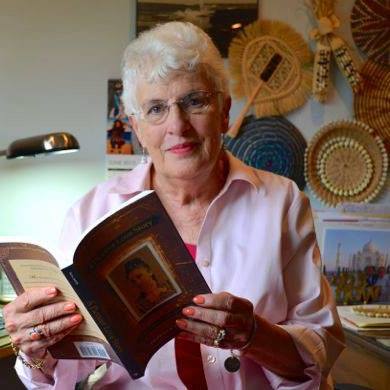The first morning I go out as dawn is breaking. An endangered male yellow-knobbed curassow parades by in regal spender. His black curly crest and bright yellow knoblike wattles on his lower mandible, on top of a solid black feathered body, look like nothing I’ve ever seen before.
I creep near him, He ignores me. Even as the camera fires off a multitude of shots he walks as if he is the only creature on the planet. He has a destination in mind and ignores all else. 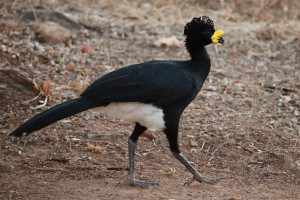
My yellow-knobbed friend slips through a passage between two parts of the lodge. I follow and discover a new perspective. Hills rise behind the building covered with Piñero’s diversity of trees, including mango, rain trees, oaks, and Venezuela’s national tree, the “Araguaney.” A small flock of curassows are foraging on the ground, looking for their morning energy.
I am at a cattle ranch and nature preserve, Hato Piñero, which covers much of the central llanos (grasslands) of Venezuela. Hato Piñero offers the best of the Venezuelan llanos and houses over 350 species of birds. A true paradise for birdwatchers.
After breakfast each day, the open safari vehicle takes the nine of us to another fascinating spot abounding with birds. While watching for ibis, sunbitterns, herons, and kingfishers, we suddenly pay attention to the caimen.
A caiman is Venezuela’s relative of our alligator. We see at least three stretched out on the banks and six or seven in the water. Then Donna exclaims, “Look, right next to the edge by the road – a bunch of baby caimen.”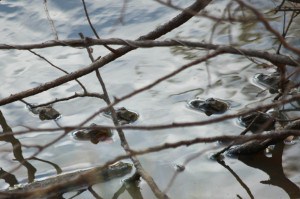
David, our guide, starts making buzzy hissing noises and loud clicks with his tongue, sounding like a caiman. Mama Caiman heads toward her babies. You can almost hear her thinking, “Got to go protect those kids.”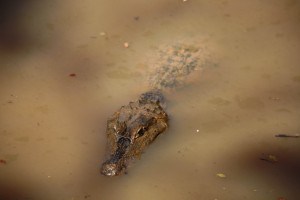
Mama is moving on a direct path toward Ben and Donna. The rest of us are looking down from the truck. David says quietly, “Ben, Donna, move on up the road away from the edge of the lake.”
Suddenly we realize that all the caimen in the lake have their heads up out of the water … looking our way.
You can’t miss them. Covered with feathers of scarlet with narrow black wing tips are so distinctive. We see two or three scarlet ibis. I’d never seen one before except in a zoo or nature park so this first sighting was exciting.
But then…David suggests we take a picnic supper the last night we are at Hato Piñero. He mentioned a roost, but I didn’t realized the treat that lay ahead. We drove and drove and finally stopped near open shallow water with a row of trees at one end.
Suddenly flocks…hundreds…of scarlet ibis begin to fly into their “roost” for the night. They must be restless sleepers as they engage in a lot of flapping, moving around, and noise making. It is hard to figure out where to point the camera to get the best shots. How many pics did I take of this over-active sleeping spot? I don’t know, but it is a lot. 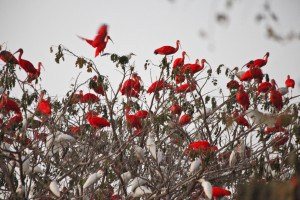
Steve Hilty says in Birds of Venezuela, “Few sights in nature are as memorable as one’s first views of the breathtaking red color of a flock of Scarlet Ibises.” Truer words were never written.
